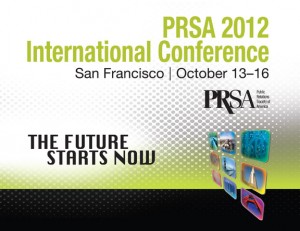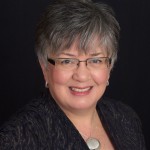Can anyone believe 2013 is almost upon us? At the New Professionals Section, we are gearing up for another outstanding year of professional development and networking opportunities for our members. However, we can’t make that happen without the dedicated and enthusiatic Executive Committee volunteers we elect every year–here’s where you come in.
If you’re looking to get more involved in Section, gain exposure in the industry and network with new and seasoned professionals alike, it’s time you filled out our volunteer interest form. Select New Professionals Section, and you’re on your way. We have a number of open positions that are sure to match your interests.
Today is the last day to express your interest–so don’t wait! Still not convinced? Hear from a few of our current Executive Committee members about the value of joining our team:
Serving as this year’s chair has been a very rewarding experience! I’ve been able to connect with other new professionals from around the country and strengthen my leadership and organizational skills. There are many opportunities for Section members to volunteer while advancing their careers. I’m very proud of what the Section has been able to do for our members and excited to see what’s in store for the future!–Leah Moon, Section chair
The experience I’ve gained as a member of the Executive Committee is priceless. It’s not only a great resume builder, but it’s also fun to work with other young professionals across the country. From having the opportunity to plan a nationwide New Professionals Week to networking with all of our great speakers, it’s the perfect place for a young PR professional.–Elizabeth Rhoads Greenaway, programming director and Section chair-elect
Serving on the Committee has been an enjoyable and rewarding experience. It provided great opportunities to network nationally with new and established professionals and taught me more about social media, strategy and career advancement. In addition to planning programming with my co-chair and the team, I also really enjoyed contributing to the newsletter and assisting with social media. Overall, I would recommend getting more involved to anyone who is interested and capable. It’s been one of my best decisions.–Brendan Hughes, programming co-chair
Serving as the diversity chair on the Committee provided me the opportunity to act as a liaison between National Diversity Committee. I got to dabble in tweet chats, blogs, newsletters and even the “Diversity Dimensions” column in PRSA Tactics. If my term taught me anything, it’s that you’re never too young to voice your opinions, concerns and viewpoints in the industry–it’s what we need more of to make progress in our profession, and the Committee was an excellent platform to do that.–Carolina Madrid, diversity chair
After being active locally and nationally in PRSSA throughout college, I was so excited to begin my career and get active in PRSA. I am so glad to have made the decision to join the New Professionals Section and work with colleagues in similar career stages to help create an engaging, beneficial experience for members. I’ve learned so much from my colleagues on the Committee and from fellow Section members about how to advance my PR career, and I’m looking forward to more service in PRSA.–Nick Lucido, PRSSA liaison
Being the PRSSA Liaison the past two years has been a great experience! It has allowed me to reach out to students across the country and bridge their foundation to PRSA after graduation.–Alyssa Bronikowski, PRSSA liaison
I’ve enjoyed getting to welcome new members to our Section, especially being able to meet up with a few every so often. It’s a great network to be a part of!–Whitney Gray, membership co-chair
As co-editor of the newsletter, I’ve enjoyed this past year working on the Committee. I’ve made friends, learned a lot and enjoyed the inclusiveness and support with my ideas and suggestions. If given, this is an opportunity everyone should take!–Jamela Wintons, newsletter co-editor
Volunteering with Section was a great way to network and meet other PR pros! Working on the blog team taught the value of time management, teamwork and communication–all important skills for any PR career. If you are thinking about volunteering with PRSA, do it! Build your portfolio and get hands on experience.–Zaneta Chuniq Inpower, blog co-chair
The opportunities provided by Committee keep me coming back again and again. Serving as the blog co-chair has opened up my network to other new professionals, as well as more experienced members in the industry, across the country. The teamwork and enthusiasm among Committee members is unmatched, and volunteering really allows you to make an impact in Section. Not only do I get to live my passion for writing, editing and social media, but I get to give back to PRSA. Volunteering on the Committee has been one of the best career decisions I’ve made.–Heather Sliwinski, blog co-chair
The deadline is today–so don’t delay! Fill out the form today and get proactive in your career and PRSA.
Volunteers must be PRSA and New Professionals Section members.



